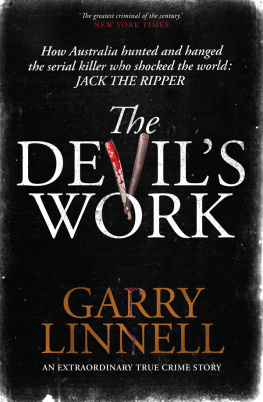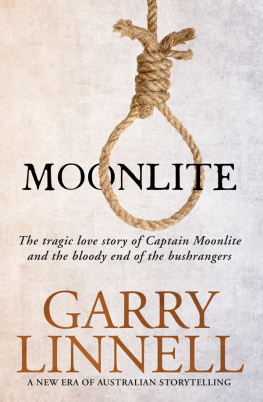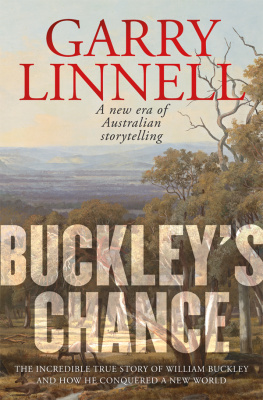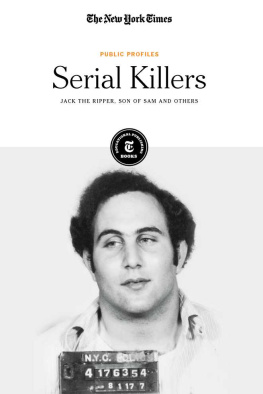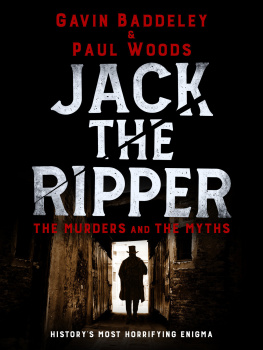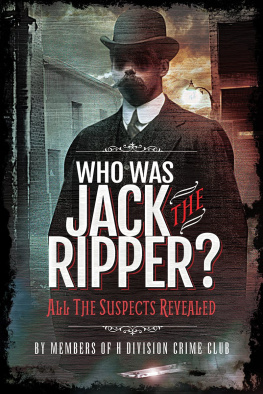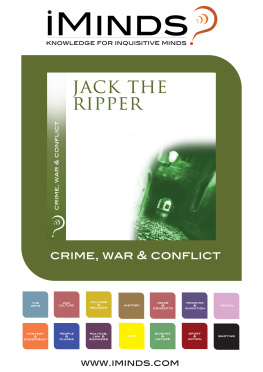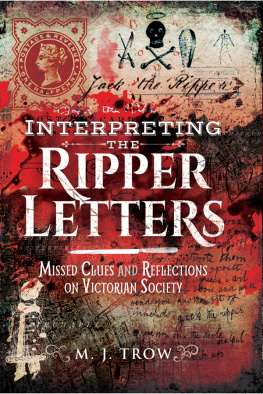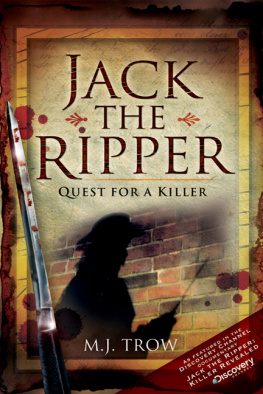AFTERWORD
In which The Author concludes this Gothic Tale by providing an Account of the Nineteenth Century Obsession with Spiritualism and why Intelligent People including Professor Sidney Dickinson, his Wife, and the Honourable Alfred Deakin along with Millions of others succumbed to its Many Trickeries.
It began, like so many things that changed the world, with an apple.
For as long as anyone could remember the apple had symbolised the search for immortality. Christians had long assumed it to be the forbidden fruit in the Garden of Eden that Eve passed to Adam, forever plunging humanity into sin and robbing it of eternal mortal life. It was the apples youth-preserving properties that triggered many of the legendary battles among the Viking gods in Asgard. And it had been an apple tossed by Eris, the goddess of discord, that started fighting among the Greek deities that eventually led to the Trojan war.
Later, when science began rudely nudging the old gods aside, an apple changed the way mankind viewed the universe.
Isaac Newton was an English mathematician who had already defied the odds by surviving a difficult premature birth on Christmas morning in 1642. Years later, as the Plague swept through Europe and Britain, he watched an apple fall from a tree in his mothers garden in Lincolnshire and wondered what forces caused it to plummet directly to the earth. That moment inspired his theory of gravitation that would reshape mankinds understanding of the cosmos and its place in it.
But if science had made spectacular progress since Newtons time, it had hardly triumphed over superstition by the middle of the nineteenth century. The First Industrial Revolution, which had seen the rise of machines and mechanised factories, had petered out with a whimper. The Second Industrial Revolution, which would transform the globe with inventions like the long-lasting light bulb, the electric telegraph and the telephone, would not begin until the 1870s. In the void between those two seismic periods of innovation flourished beliefs and legends that were as old as time itself.
The spiritualist movement began as a long, harsh winter drew to a close in March 1848 in the small farming community of Hydesville, deep in the wind-battered western plains of New York State.
Two girls fourteen-year-old Maggie Fox and her eleven-year-old sister Kate claimed to have heard mysterious knocking sounds at roughly the same time each night inside the nondescript timber home rented by their parents. There were thumps in the ceiling. Eerie knocks sounded on the thin walls. Sudden rapping would emerge from nowhere, so violent it was said to cause tables to shake and bed-frames to rattle. Maggie and Kate quickly convinced their mother, Margaret, that their home was haunted by the spirit of a murdered man, a peddler whose body had been buried beneath the house years earlier to hide the crime and whose ghost was always keen to prove its presence and provide endless details of its suffering.
One evening, with horrified neighbours watching on, the apparently terrified girls clung to each other and asked the spirit to acknowledge its presence by rapping three times. Those in the room heard three clear knocks. When asked to tell the age of one of the witnesses, an accurate thirty-three taps followed.
The girls were the youngest of six children and the only offspring of Margaret and John Fox still living at home. Maggie and Kate insisted they were not playing tricks and could, indeed, communicate with the spirit.
The story of the haunting of the Fox home quickly took root in the already fertile spiritual ground of New York state. For years its small towns had echoed with the ecstatic shouts and praises of Methodists, Presbyterians and Freewill Baptists. There were Shakers and Quakers and fervent members of the Community of the Publick Universal Friend. There were Millerites, the precursors to Seventh Day Adventists, still clinging to the teachings of former army captain William Miller, despite his failed prediction that the second coming of Christ would take place in 1843. In the 1820s in Palmyra, a small town just ten miles from the Fox home in Hydesville, Joseph Smith, a young man whose parents frequently reported heavenly visions, had founded what would become known as the Church of Jesus Christ of Latter Day Saints.
Maggie and Kate Fox were soon catapulted into another emerging phenomenon of their time the cult of celebrity. Guided by the watchful eye and constant presence of a much older sister, Leah, the girls entertained a never-ending queue of the curious, desperate to see them commune with the dead. They were invited to display their psychic abilities in the homes of prominent identities like Horace Greeley, the influential editor of the New York Tribune , and the renowned seer, Andrew Jackson Davis. They were subjected to an endless series of community and scientific investigations. During one of them Maggie and Kate wept bitterly under their afflictions as a committee of women from nearby Rochester disrobed them and made them stand on pillows placed on a glass to minimise any chance of electric vibrations. The committee concluded the thumps and knocks they heard were of a paranormal origin.
There were harsher critics a local Methodist church denounced them as frauds and a study by scientists from Buffalo University concluded the sisters were using the clicking of their knee joints to generate their unearthly noises. The truth and the role of the apple would take years to emerge as a wave of excitement and relief spread across the United States. An afterlife existed and the Fox sisters held the keys to the door separating the living from the dead. Their paranormal abilities were an antidote to sciences cold rationality and for many an open rebuke to Leviticus stern warning in the Old Testament not to turn to mediums or seek out spiritists, for you will be defiled by them.
Maggie and Kate began touring the country performing to packed theatres. Sances became a nightly ritual in dining rooms and parlours throughout the United States and Europe. Queen Victoria, grieving the death of her husband, Prince Albert, became consumed with the occult after a thirteen-year-old medium passed on a message in which he referred to her by her pet name known only to her husband. A new class of mediums and spiritists quickly emerged to act as paying guides for these evening sojourns into the afterlife. People grew comfortable with the idea of inanimate objects springing to life. Table tipping became a worldwide phenomenon. A crowd gathered around a table in a suitably darkened room. They would then be asked to place their hands on the table, palms down, and concentrate. More often than not the table would soon begin moving on its own, tilting, shaking and even, in some instances, pinning participants against nearby walls.
Scientists like Englands Michael Faraday, the discoverer of electromagnetic induction, conducted experiments that proved this table movement (and the upturned glass making the rounds of a Ouija board) were due to the ideomotor response muscle movement independent of deliberate thought. But few were listening by then and even fewer cared. To many, sciences insights into electricity and magnetism were little more than grand examples of alchemy. Perhaps electricity and magnetic attraction were simply physical manifestations of matter from another dimension that same one inhabited by the deceased.
By the 1860s the crude knockings and tappings associated with the Fox sisters had been superseded by increasingly sophisticated methods of communication with the afterlife. There were voice mediums, who spoke with the accents of the dead. There were automatic writers, who channelled spirits through pen and paper. One of the most famous of these would be a Chicago woman, Pearl Curran, who wrote several novels and hundreds of verses while collaborating with the spirit of a seventeenth century woman she knew as Patience Worth.

